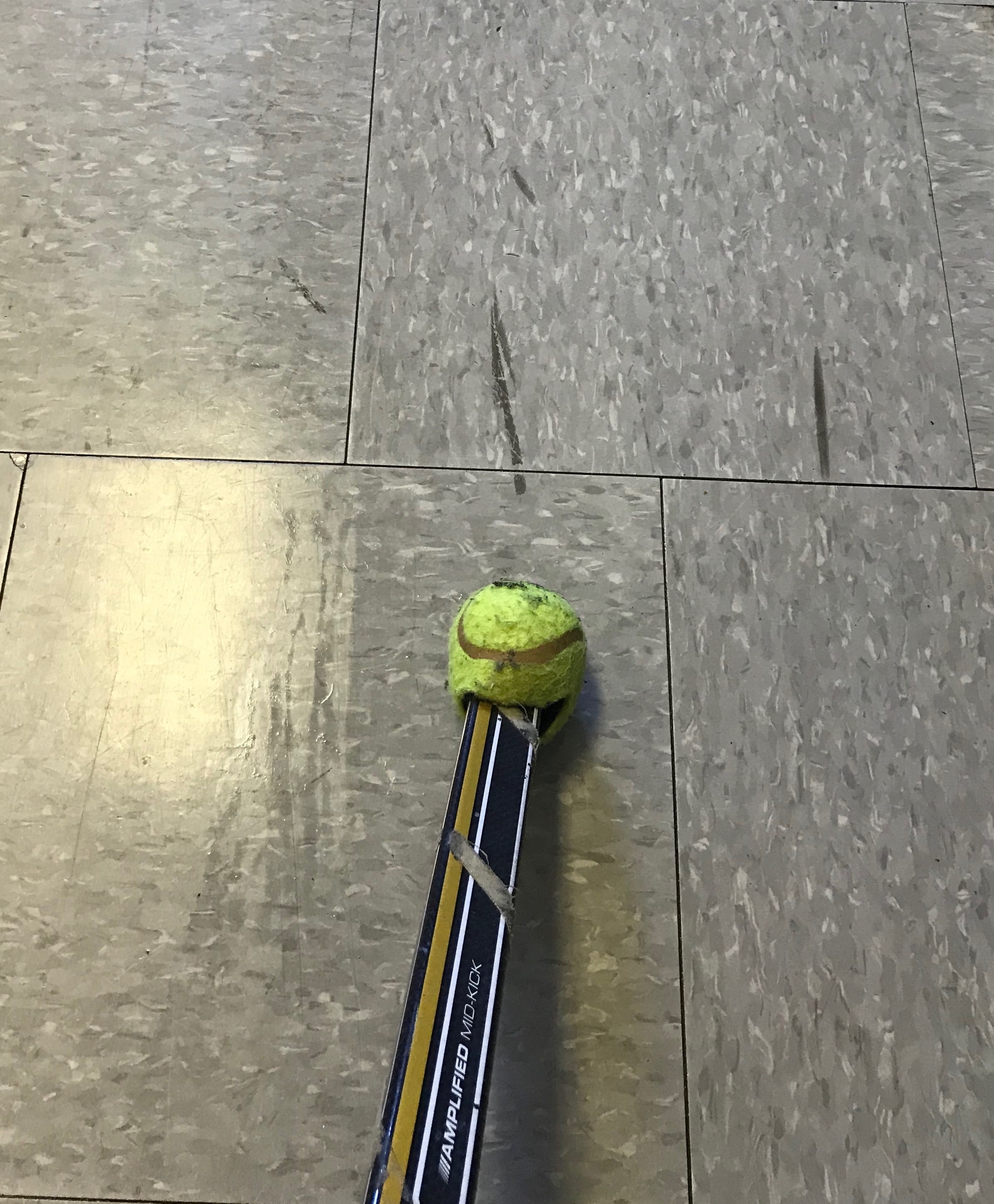
My wife has a side job as the caretaker at our local Community Centre. I gave her a hand to clean the facility after a recent event. I noticed an oddity in the janitor’s closet. There was a hockey stick with a tennis ball on the end of it. I thought it was unusual. I took a mental note and carried on.
The first task was sweeping and mopping the floor. Fortunately, the facility has a handy-dandy motorized floor scrubber. I inquired how much cleaning solution to use and my wife’s response was “oh just dump a little in”. I am not a “just dump a little in” kind of a guy. The label on the bottle provided a range of ratios for cleaning solution to water. In order to figure out the right amount of solution to use I needed to know the water holding capacity of the floor scrubber. I asked my wife for a copy of the operator’s manual and her response instantly spiked my anxiety: “I’ve never seen one.” Before I was able to think my way through this problem my wife called out: “Just Google It”.
Just Google It
This is blog lesson number 1. How often are we in need of information and rather than “Just Google It” we stress about the lack of knowledge. I am struck by how often I find myself in conversation with a group of people lamenting over some unknown until one of the group genii comes up with the idea to “Google it”. It’s as if our pre-google brain gets stuck in its old problem-solving ways until our more recent post-google brain kicks in.
I google it and determine the holding capacity for this particular make and model of floor cleaner. The range of cleaning solution required was 180 ml for a lightly soiled floor to 1000 ml for a heavily soiled floor. I inspected the floor and determined that the subjectivity involved in a determination of soil level had a significant impact on how much cleaning solution to use. So I dumped a little in. Lesson #2 – Listen to your wife.
Listen to your wife
This is good advice on any given day. Today she was technically my supervisor. After the floor had been mopped she asked me to remove some black streaks from the floor in the entry way. The handy-dandy motorized scrubber hadn’t removed the marks. I grabbed an old fashion mop and started scrubbing with a lot of elbow grease. The marks didn’t budge. I called my wife over to show her just how difficult this task was. Seeing my struggle she offered, “You know over at the school they have a tennis ball on the end of a stick for this.” Ahha. I walked over to the janitor’s closet and grabbed the contraption I had noticed earlier. Communication had made this connection possible.
Moral of the Story
“Listen to your wife” is sage advice. Digging a little deeper, I think what often holds us back from the “just dump a little in” approach is fear. Fear of failure, fear of screwing up, fear of wrecking something. After having done my research I was more confident and able to make a judgement call on the amount of “little” to dump in.
Knowledge is an antidote to fear. You never know when knowledge will come in handy. When leaders pay close attention to surroundings, especially things that seem out of place, they are gathering knowledge. This knowldge may not be applicable in the moment, but connect it to a problem in the future and it becomes invaluable. Leaders who pay close attention to the resources (relationships, talent, tools, etc.) that surround them are best positioned to make connections that will help themselves and others.





